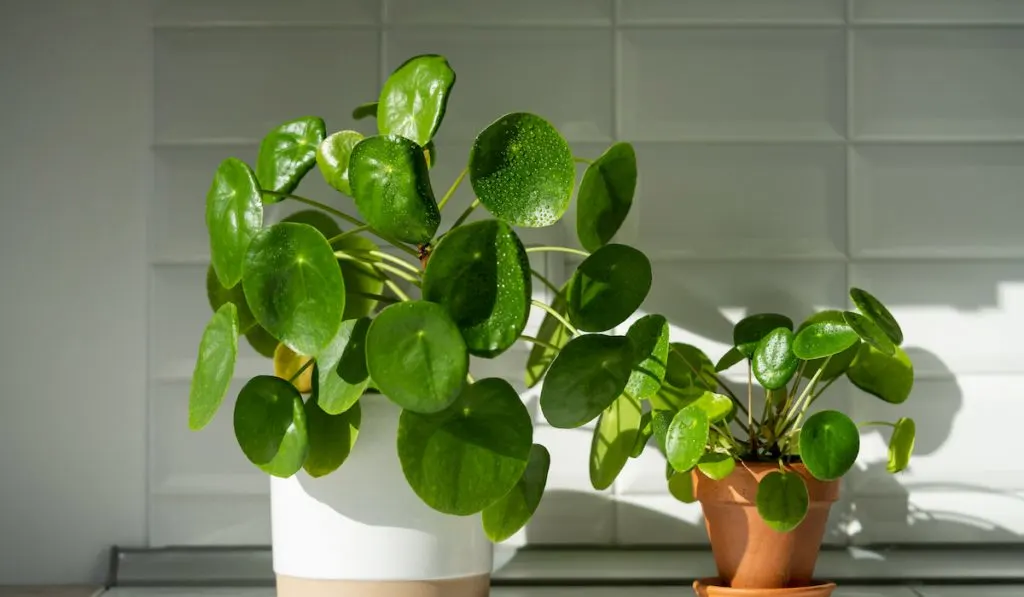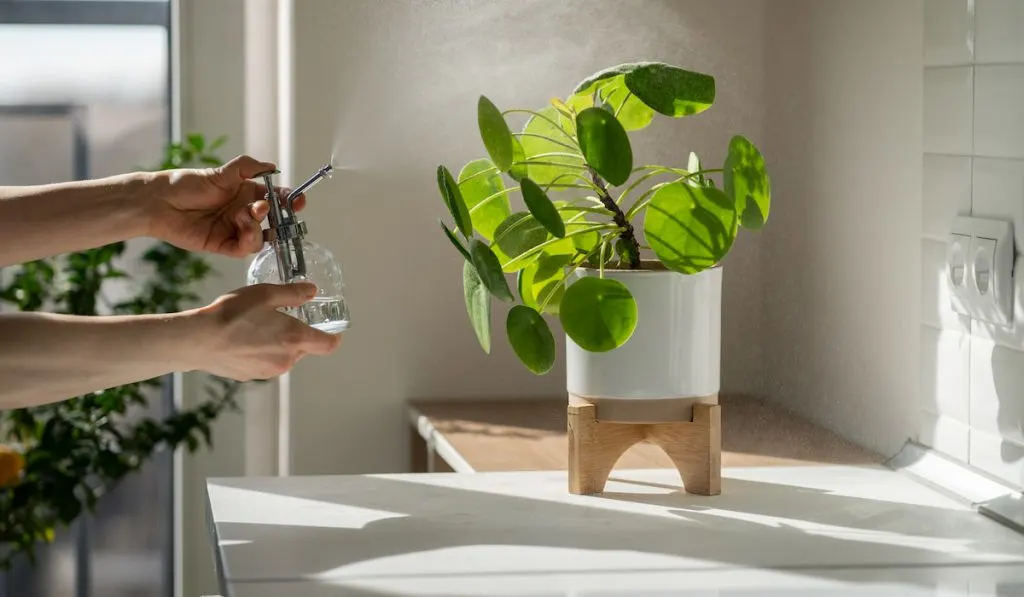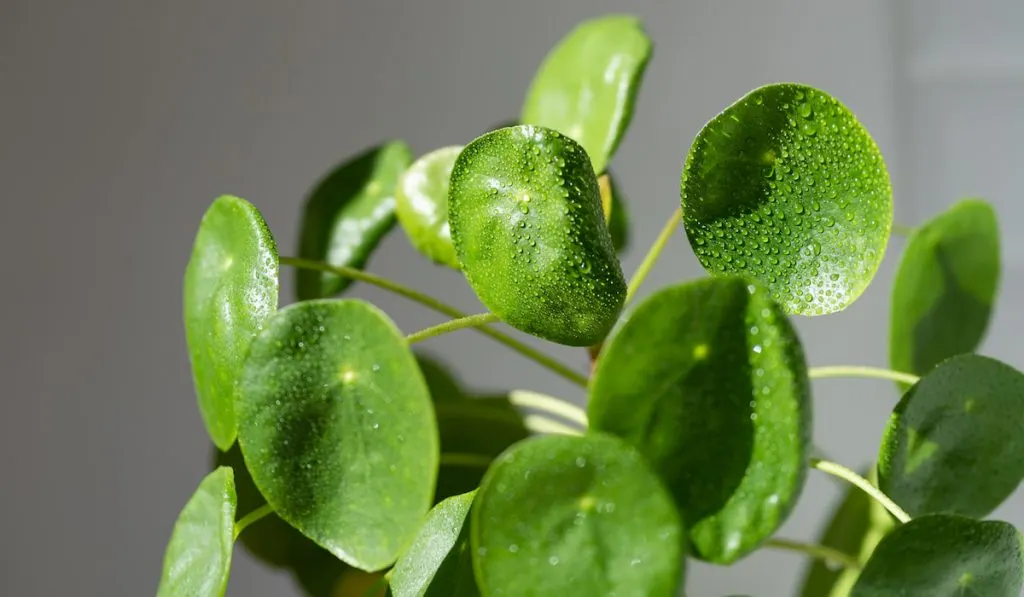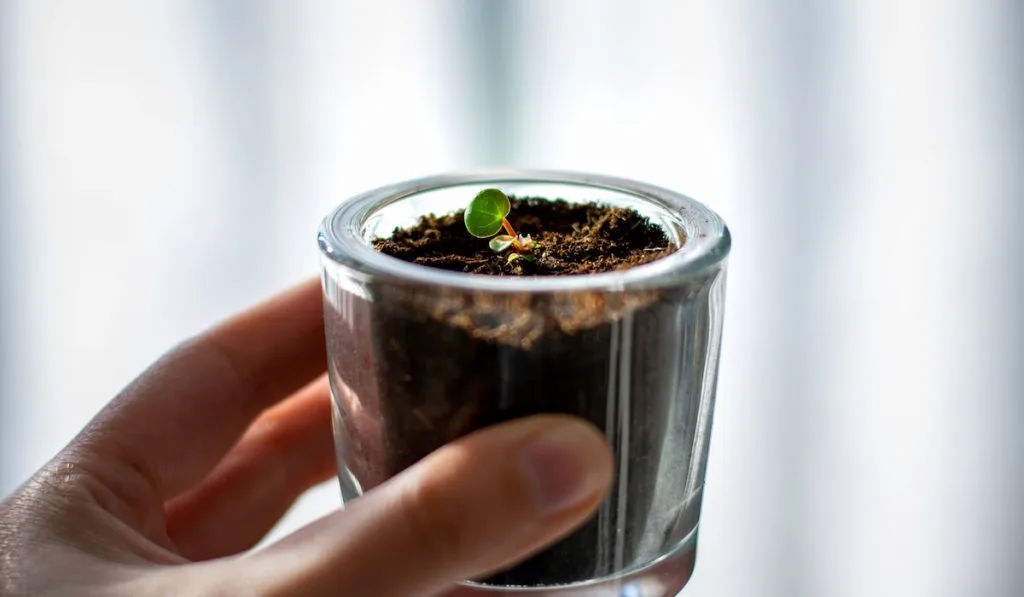Pilea peperomioides, which also goes by the name of Chinese money Plant, missionary plant and pancake plant, is a good addition to your home. Long a popular houseplant, these are one of the easiest plants to take care of.
They are easy to grow and propagate, are low in maintenance, purify the air, and are non-toxic and pet-friendly plants. Whether you want to add another plant to your collection or just starting out, Pilea peperomioides are definitely great to have in your home.

These plants are part of the succulent family and are native to Yunnan Province in Southern China. They thrive well in dry conditions and can adjust to low-light environments.
They are called Chinese money plants because of their coin-shaped leaves that layer on top of each other, giving the appearance of large green coins.
The plant is thought to bring in good fortune, money, and abundance. It is believed that by placing a coin on the plant will bring you good fortune.
Its leathery, thick, dark green leaves grow to a height of 16 inches (40 cm) and its stems will start to twist as it grows older. Mature plants are also likely to produce small white flowers on pinkish stems.
Pilea peperomioides are easy going, tolerant, and grow reasonably fast. When conditions are good and your plants are well taken care of, they will grow strong, healthy, and happily in your home.
Pilea peperomioides Care Tips
Like any other plants, it is important to take good care of your house plants for them to thrive and grow beautifully. Light, water, humidity, and temperature play a big role in taking care of your plants.
Here are the conditions your plant needs as well as other additional care tips you would be needing to care for your Pilea peperomioides.
Bright Light
Pilea peperomioides flourish in medium to bright indirect sunlight. It can also endure a few hours of direct sunlight, but only in moderation. It can also adapt to lower light but its leaves will be darker and the plant will spread out more.
These plants grow towards the sun and their central stem will visibly lean toward the light source. It is best to rotate the plants at least 2-3 times a week to prevent their leaves from growing lopsided and to stimulate balance and even growth.
Moderate Watering
Thorough watering of the plants every 1-2 weeks will keep your plants looking fresh and healthy. Allow the soil to dry between waterings to prevent the roots from rotting as these plants do not like soggy soil.
The soil should remain damp, but not wet. Only water your plant if the top of the soil is at least 25% dry. Provide enough water to your plant so the liquid flows from the drainage hole and into the saucer.
Make sure to remove any excess water accumulated in the saucer and not let the plant sit on any standing water. This is important as the roots may rot and destroy your plant.
For environments with warmer and sunnier weather, you should water the plants more frequently. And for environments with lower light, reduce the amount of watering.
During winter, it is okay to let the plants dry out a little between waterings. Although, you may have to raise the humidity in the area with a humidifier, pebble tray or regular misting.
Humidity
As Pilea peperomioides are house plants, the average household humidity is fine. These plants do well in dry humidity although avoid overly dry conditions.

Temperature
The normal household temperature is good for these plants. Good temperature is in between 55°F-85°F (13°C-30°C).
Do not let the temperature of the area where your plants are dip below 50°F (10°C). Also, do not place them near heating vents during winter to avoid the leaves from dropping, and keep them away from any risk of frost.
Food
These plants produce a good amount of growth and pups on average so they need to be fed occasionally.
During spring and summer, use a general liquid houseplant fertilizer on the plants at half the suggested strength for best results. Use plant fertilizers at least twice during the spring and summer months.
Aerate the Plant’s Soil
If you haven’t watered your plants for a while, infuse air into the soil by using a toothpick or a chopstick. If the soil is too packed and dry, the water that you supply might not reach the roots properly.
Regular Showers
Wipe down the leaves or generously provide regular showers to your plant since the leaves of the Pilea peperomioides tend to accumulate dust.
Common Issues of the Pilea peperomioides
Pests
Pilea peperomioides is more vulnerable to pests and insect infestations if it is stressed or weakened. Spider mites, mealybugs and scales materialize frequently in indoor conditions. Spider mites are sap-sucking bugs which can drain the plant of moisture.
When this happens, it is important to treat these spider mites and mealybugs as soon as they appear by wiping down the plant regularly and spraying horticultural oil weekly. These insects can damage your plants and accelerate the yellowing of the plants.
Chemicals in the Water
If you have observed white spots on the leaves of your Pilea peperomioides, these are likely caused by the salts and chemicals that are found in your water.
To prevent this from happening, you could leave the tap water (if you don’t have a filtration system) in an open container overnight to help remove some of the chemicals like chlorine and fluoride in the water when you water the plants.

Improper Soil Moisture
One of the most common reasons that Pilea peperomioides turns yellow is improper soil moisture due to overwatering.
If you notice that the leaves are yellowing and its stems are black, it means it is overwatered. Provide proper soil moisture for your plants to avoid your plants from yellowing, drooping, and curling.
Low Humidity
Humidity can also play a role in your plants turning yellow. Low humidity and dry soil can make your plants droop and brown on the edges followed by the leaves yellowing, browning, and then eventually dropping.
Underwatering
When the plant is wilting or its leaves are curling and look droopy, it means that the plants are not getting enough water. Plants lose turgidity if they are not being watered enough. Check the soil and make sure it is not overly dry and if so, give your plants that much-needed water.
Improper Lighting
Too much direct sunlight will burn the leaves, make them look washed out, and bring about a purple hue. But if placed in a really low light, its leaves might yellow, bend, and curl rather than remain flat.
If you keep your plant in a low light condition and suddenly bring it out in the sunlight, burn spots will definitely occur.
What you need to do is gradually move your plant so that it will get used to the changing conditions. Growing in dark places for long periods of time will result in your plant looking sickly and weak.
Repotting and Potting of Pilea peperomioides
Pilea peperomioides is known to be fast-growing and quickly fills its pot. Do a yearly repotting of the plant in the spring or summer months to refresh the soil.
Use a standard all-purpose potting mix that is labeled as suitable for houseplants or garden plants when picking soil for your plants. Upgrade the pot size if needed. A pot with proper drainage is important for your plants.
Pilea peperomioides adapts well to different kinds of pots such as plastic, ceramic, and terracotta pots.
Propagation of Pilea peperomioides
Spread love and wealth with these steps and tips on how to propagate your plant to give you a collection you can cherish at home. Pilea peperomioides are simple and easy to propagate.
Take the cuttings to share with your family and friends or add it to your plant collection. These plants are one of the easiest houseplants to propagate through cuttings.
You can grow this plant from seed as well, although it is quite difficult to do so. The seeds need to be fresh. The new plants from seed take a while to reach a reasonable size.

This is an option if you couldn’t find a mother plant from which you can harvest from. An easier option is working with the plantlets of a mother plant in these few steps.
- When your plant gets to a certain degree of maturity, check your plant and look for plantlets through the soil. You will be able to see a lot of growth points, which are smaller-stemmed versions of the mother stem growing.
- When the plantlets or “pups” are about 3 inches tall above the soil, it is now safe to separate them from the mother plant. Gently dig around the soil to expose the roots of the pups. You can now cut them with a clean and sharp knife and cut the main root an inch or two below the soil.
- After cutting the baby plant, you can either place them in water or in soil. If placing it in soil, place in a separate potting container and make sure to keep the soil moist until the plant is stable and begins to produce new leaves.
If you want to place it in a container of water, make sure that the stem is submerged but keep the green growth above the water level.
New roots will be visible in a few short weeks. Then you can remove it from the water and place it in a pot in a similar soil mix to the mother plant.
In another couple of weeks, its roots will anchor in the soil. Once the plants are stable and have established a root system, you can now continue the regular maintenance and care for your new plant by giving proper light, water, and fertilization.
Resources:
- https://bloomscape.com/plant-care-guide/pilea/
- https://www.thesill.com/blogs/plants-101/how-to-care-for-pilea-peperomioides
- https://watanabefloral.com/blog/caring-for-your-chinese-money-plant-694/
- https://www.ourhouseplants.com/plants/pilea-peperomioides
- https://www.thespruce.com/growing-pilea-peperomioides-5090425
